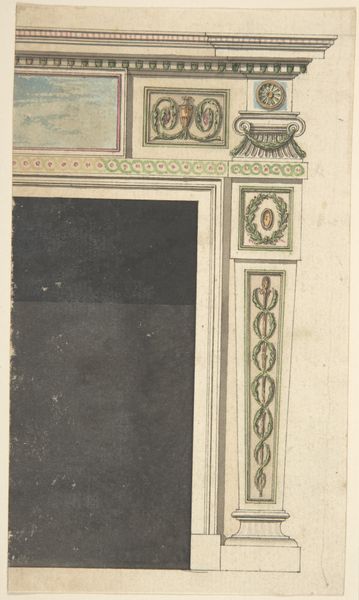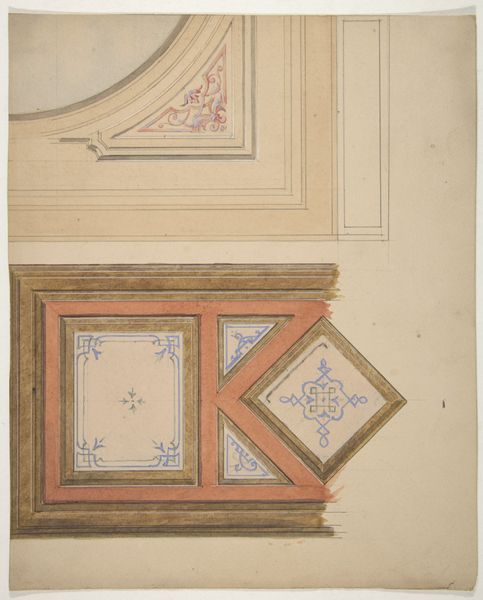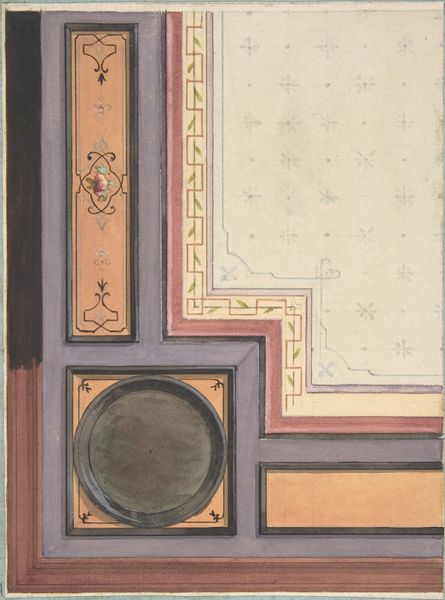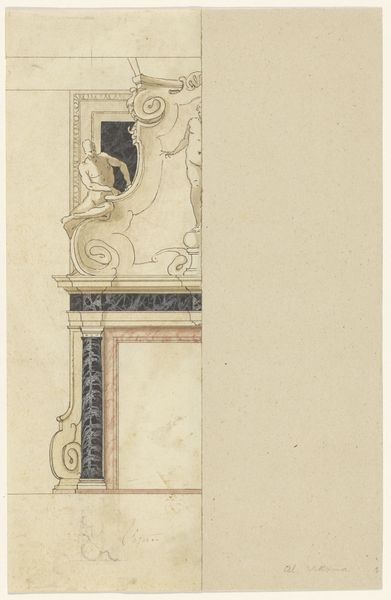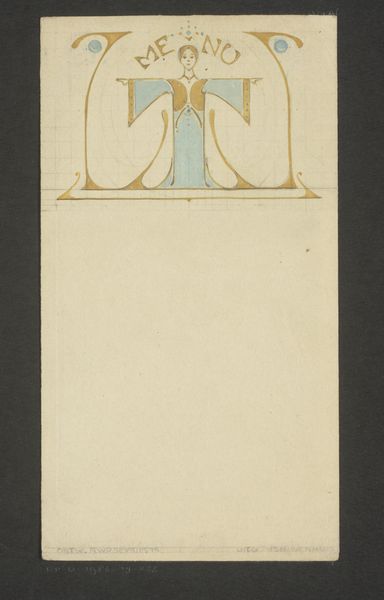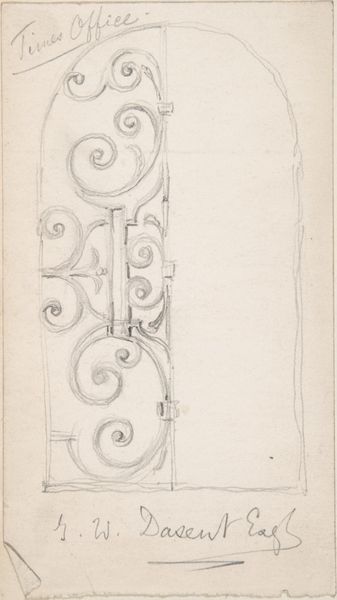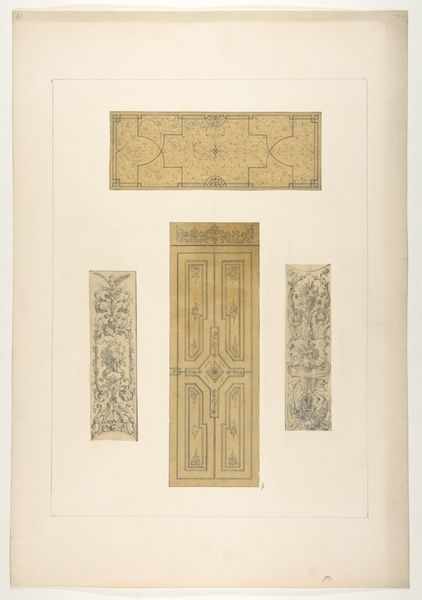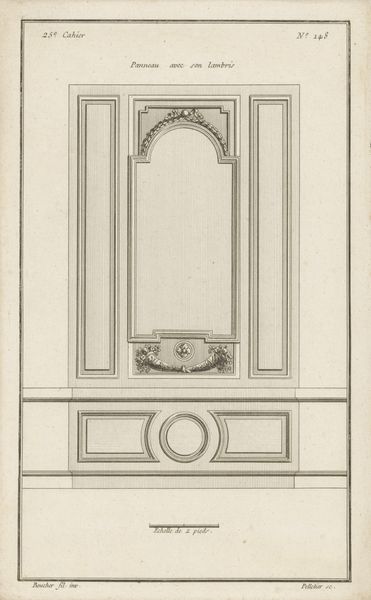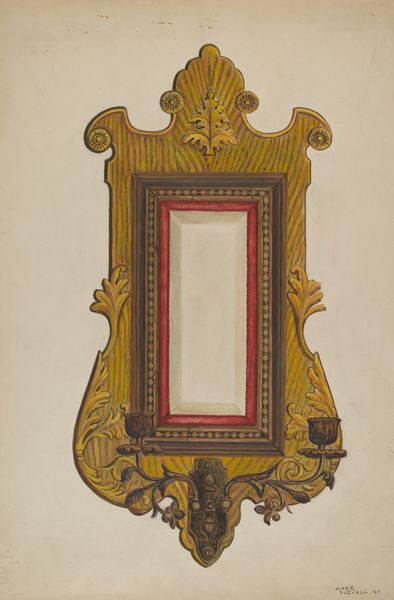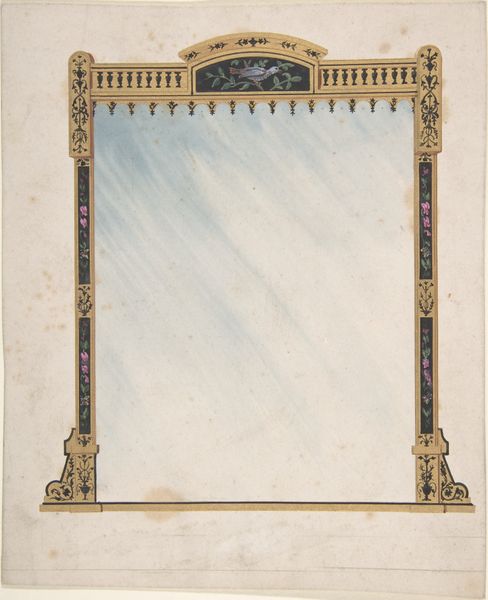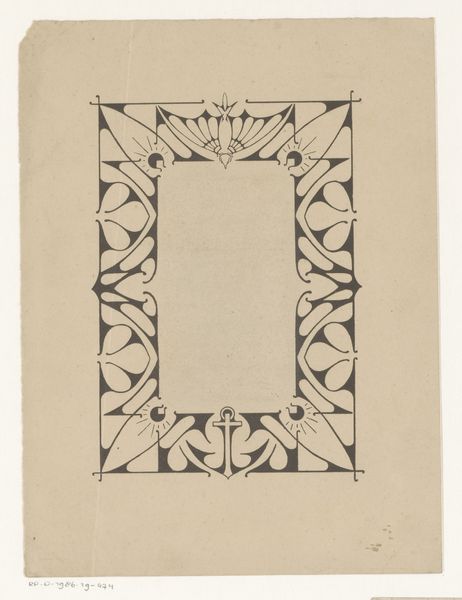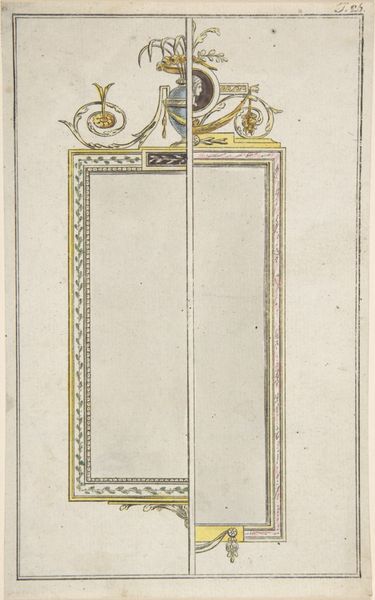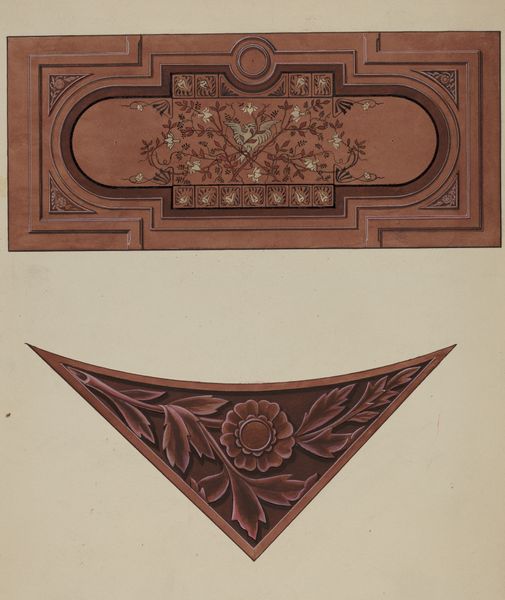
drawing, watercolor, wood
#
drawing
#
watercolor
#
geometric
#
wood
#
decorative-art
#
watercolor
Dimensions: overall: 35.4 x 27.9 cm (13 15/16 x 11 in.) Original IAD Object: Molding 3 1/8"wide
Copyright: National Gallery of Art: CC0 1.0
Curator: Here we have Vera Van Voris's drawing, dating from around 1938, entitled "Hand-carved Picture Frame 'River of Life' Motif." Editor: Well, right away, I notice the earthy tones—terracotta, ochre, dark blue. It gives off this folksy, almost utilitarian vibe, despite the decorative patterns. I'm drawn to the visible wood grain beneath the colors. Curator: Indeed. Van Voris clearly wants us to be aware of the raw materials, the wood itself, even in this drawing. Look closer at the wavy lines punctuated by dots – what do they evoke for you? Editor: I see something elemental, like a diagram of irrigation—the lifeblood of a community mapped onto the landscape and rendered into functional form. Curator: That very 'river of life,' a potent symbol connecting creation, sustenance, and continuity! In many cultures, flowing water represents not just physical life, but spiritual regeneration. The geometric patterns too, add layers to its meaning; we might also be looking at abstracted ripples of a water current. Editor: You're pulling at something there. Van Voris seems to intentionally be evoking connections to nature while rendering the subject of decoration, the handmade object that has a distinct social life, an afterlife that can reflect the aspirations of communities through time. I wonder about the cultural context in which this design emerged? Were such motifs prevalent in the area at that time? Curator: The drawing itself, rendered in watercolor on paper, invites speculation as to its intent, of course, and provides an element of deliberate design planning. The decorative art style is an intersection where the visual motif meets the functional and social object, here, an image, specifically, of a frame! What is interesting about these renderings of the would-be real thing? What cultural currents does that mirror or refract? Editor: Precisely. It's the layering of those tangible references, natural patterns that can stand for life’s flow with our engagement in consumption and the aesthetics of home. The way a family chooses to display items of significance; how they carve meaning through objects both quotidian and extraordinary. The symbolism feels immediate, raw even, while considering what art represents: both art and art-making as itself essential. Curator: This has given me such an increased appreciation for the intersection of symbol, utility, and artmaking as core tenets of life itself! Editor: And I, for the social construction of needs and meanings via the tools and materials all around us, visible in artifacts like the image here.
Comments
No comments
Be the first to comment and join the conversation on the ultimate creative platform.
